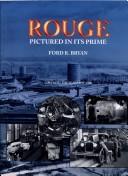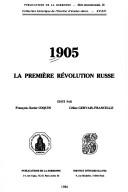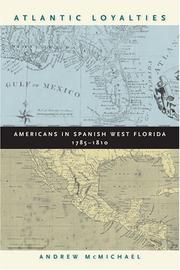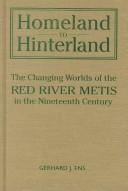| Listing 1 - 10 of 45 | << page >> |
Sort by
|
Book
ISBN: 2492861007 220412835X Year: 2021 Publisher: Paris : Publications de l’École Pratique des Hautes Études,
Abstract | Keywords | Export | Availability | Bookmark
 Loading...
Loading...Choose an application
- Reference Manager
- EndNote
- RefWorks (Direct export to RefWorks)
L’humanitaire envahit les écrans, les médias et nos vies. Il passe pour l’une des démarches et des valeurs les plus prisées de notre temps. Mais que recouvre exactement ce phénomène ? L’histoire du Comité international de la Croix-Rouge (CICR), la plus ancienne des organisations internationales consacrées à l’aide aux victimes, donne des réponses éclairantes à ces questions. À travers le récit de quatre moments-clés de cette institution vieille de plus de 150 ans, Irène Herrmann nous montre que l’engouement dont il jouit est récent. L’idéal de compassion sur lequel il repose n’entend pas lutter contre les injustices mais est indissociable du nationalisme comme du colonialisme. De fait, s’il comprend une part indéniable de dévouement, il n’est pas totalement désintéressé. Ainsi, en retraçant le parcours du CICR, l’auteure met-elle en lumière des réalités contre-intuitives voire carrément dérangeantes.
History --- CICR --- humanitaire --- Croix-Rouge
Book
ISBN: 0991275624 0991275632 Year: 2014 Publisher: Olathe, [Colorado] : Ascend Books,
Abstract | Keywords | Export | Availability | Bookmark
 Loading...
Loading...Choose an application
- Reference Manager
- EndNote
- RefWorks (Direct export to RefWorks)
Basketball --- Scouting. --- Louisiana State University (Baton Rouge, La.) --- Basketball.
Book
ISBN: 9781469618357 1469618354 9781469618333 1469618338 1469636034 9798890844569 9798890844552 Year: 2015 Publisher: Chapel Hill
Abstract | Keywords | Export | Availability | Bookmark
 Loading...
Loading...Choose an application
- Reference Manager
- EndNote
- RefWorks (Direct export to RefWorks)
Borderlands --- Border-lands --- Border regions --- Frontiers --- Boundaries --- History --- Spain --- United States --- Gulf States --- Florida --- Louisiana --- West Florida --- British West Florida --- Florida occidental jurisdicción de Baton Rouge --- Baton Rouge (Jurisdicción) --- Republic of West Florida --- East Florida --- Foreign relations --- History.

ISBN: 0814336833 9780814336830 0972784306 9780972784306 Year: 2003 Publisher: Detroit : Wayne State University Press,
Abstract | Keywords | Export | Availability | Bookmark
 Loading...
Loading...Choose an application
- Reference Manager
- EndNote
- RefWorks (Direct export to RefWorks)
Assembly line methods --- Plant layout --- Mass production --- Automobile factories --- Manufacturing processes --- Production engineering --- Standardization --- Automobile assembly plants --- Factories --- Facility layout --- Factory layout --- Layout, Factory --- Layout, Plant --- Industrial engineering --- Assembly lines --- Production-line methods --- Automation --- Layout --- Design and construction --- Ford Motor Company. --- Dearborn, Mich. --- Rouge River Plant (Dearborn, Mich.) --- River Rouge Plant (Dearborn, Mich.) --- Rouge (Automobile factory : Dearborn, Mich.) --- Plant layout. --- Assembly-line methods.


ISBN: 2720402206 285944114X 9791035104078 Year: 2020 Volume: 32 26 Publisher: Paris : Éditions de la Sorbonne,
Abstract | Keywords | Export | Availability | Bookmark
 Loading...
Loading...Choose an application
- Reference Manager
- EndNote
- RefWorks (Direct export to RefWorks)
Trop longtemps traitée en parente pauvre, la révolution de 1905 s’émancipe et commence enfin à retrouver sa véritable dimension. Réhabilitation bienvenue. Impossible en effet de comprendre l’évolution ultérieure de la Russie sans se reporter à ces années 1905 - 1907 riches d’interrogations non moins que d’enseignements : - quel fut le retentissement véritable du Dimanche rouge, notamment en milieu ouvrier ? - les paysans étaient-ils réellement tous les boute-feu que l’on a si souvent décrits ? - pourquoi le moujik en uniforme a-t-il écrasé la révolution ? - quelle fut la part des nationalités non russes, de la Pologne au Caucase, dans la fièvre révolutionnaire ? - un régime constitutionnel était-il viable dans la Russie autocratique et en fit-on réellement l’expérience ? Sur tous ces points, et bien d’autres, cette publication jette un regard neuf et apporte des éléments de réflexion qui interdisent de se contenter plus longtemps du prêt-à-penser habituel. Ni révolution pour rien, ni « répétition générale », la révolution de 1905-1907 viendra se briser sur l’intransigeance de l’autocratie qui fera manquer à la Russie son rendez-vous avec la liberté. Premier colloque consacré à 1905 hors des frontières de l’ancien empire tsariste, cet ouvrage collectif constitue tout à la fois un jalon et un repère.
Russia --- URSS --- History --- Congresses --- Histoire --- Congrès --- révolution de 1905 --- réhabilitation --- Dimanche rouge --- régime constitutionnel --- régime autocratique --- colloque --- empire tsariste --- Manifeste du 17 octobre --- liberté religieuse --- Congresses.
Book

ISBN: 2356681647 2356680780 9782356680785 Year: 2022 Publisher: Lyon : MOM Éditions,
Abstract | Keywords | Export | Availability | Bookmark
 Loading...
Loading...Choose an application
- Reference Manager
- EndNote
- RefWorks (Direct export to RefWorks)
The 34 articles published in this volume form the proceedings of the 9th Red Sea conference held at Lyon in July 2019, whose core topic was the “spatiality of networks in the Red Sea”, including the western Indian Ocean. In the networked space that the Erythra Thalassa never ceased to be, stable factors such as landscape, climate, and wind patterns have been constantly entangled with more dynamic elements, such as human activity. The contributors to this volume explored how the former were integrated into the countless networks formed by humans in the region, and how these were impacted by spatial constraints over the long course of history. This volume offers a wide range of stimulating contributions. The first articles are devoted to medieval and modern European sources on the Red Sea and its exploration, and to the networks of knowledge dissemination about the region. They are followed by papers relating to the main nodes, the ports and islands of the Red Sea. Several articles are then focusing on the agency of hinterland populations in the networks, and the relationships between the regions bordering the Red Sea and central powers that governed them, often from distant lands. Production and consumption networks are the subject of the next articles, to assess the extent and nature of exchanges and to shed light on the archaeology of circulations. The logistics of exploration, exploitation and trade in the regions bordering the Red Sea are then examined. The last series of papers focuses on regions where archaeological work started only recently: Somaliland, Tigray, and the Horn of Africa. Thanks to all the participants, whether they have exploited new data or re‑examined long-known material, the 9th edition of the “Red Sea Project” gave rise to vibrant debates, showing that the Erythra Thalassa remains an endless source of knowledge. Les 34 articles publiés dans ce volume forment les actes de la 9e édition de la « Red Sea conference » qui s’est tenue à Lyon en…
Excavations (Archaeology) --- Coastal archaeology --- Material culture --- Archaeology --- mer Rouge --- Corne de l’Afrique --- océan Indien --- Antiquité --- époque médiévale --- réseau --- commerce --- port --- nomade --- navigation --- logistique --- spatialité --- Red Sea --- Horn of Africa --- Indian Ocean --- Antiquity --- medieval period --- network --- trade --- nomad --- logistics --- spatiality --- Mer Rouge (région) --- Histoire. --- Indian Ocean Region --- Antiquities --- Commerce

ISBN: 1282553003 9786612553004 0820336505 9780820336503 9780820336732 0820336734 9780820330044 0820330043 9780820330235 082033023X 9780820326801 0820326801 Year: 2008 Publisher: Athens, Ga. University of Georgia Press
Abstract | Keywords | Export | Availability | Bookmark
 Loading...
Loading...Choose an application
- Reference Manager
- EndNote
- RefWorks (Direct export to RefWorks)
The book contextualizes the 1810 rebellion, and by extension the southern frontier, within the broader Atlantic World, showing how both local factors and events in Europe affected lives in the Spanish borderlands. Breaking with traditional scholarship, McMichael examines contests over land and slaves as a determinant of loyalty.
Allegiance --- Frontier and pioneer life --- British Americans --- Loyalty, Political --- Political loyalty --- Loyalty --- Citizenship --- Patriotism --- Border life --- Homesteading --- Pioneer life --- Adventure and adventurers --- Manners and customs --- Pioneers --- Anglo-Americans --- English Americans --- British --- Ethnology --- History. --- Ethnic identity. --- History --- Spain --- Florida --- West Florida --- Baton Rouge (La.) --- British West Florida --- Florida occidental jurisdicción de Baton Rouge --- Baton Rouge (Jurisdicción) --- Republic of West Florida --- East Florida --- Louisiana --- Espagne --- Espainiako Erresuma --- España --- Espanha --- Espanja --- Espanya --- Estado Español --- Hispania --- Hiszpania --- Isupania --- Kingdom of Spain --- Regne d'Espanya --- Reiaume d'Espanha --- Reino de España --- Reino d'Espanya --- Reinu d'España --- Sefarad --- Sepharad --- Shpanie --- Shpanye --- Spanien --- Spanish State --- Supein --- イスパニア --- スペイン --- Colonies --- Administration --- Ethnic relations.

ISBN: 1281997382 9786611997380 1442675829 9781442675827 9781281997388 0802008356 0802078222 9780802078223 9780802008350 Year: 1996 Publisher: Toronto University of Toronto Press
Abstract | Keywords | Export | Availability | Bookmark
 Loading...
Loading...Choose an application
- Reference Manager
- EndNote
- RefWorks (Direct export to RefWorks)
"Most writing on Metis history has tended to concentrate on the Resistance of 1869-70 and the Rebellion of 1885, without adequately explaining the social and economic origins of the Metis that shaped those conflicts. Historians have often emphasized the aboriginal aspect of the Metis heritage, stereotyping the Metis as a primitive people unable or unwilling to adjust to civilized life and capitalist society." "In this social and economic history of the Metis of the Red River Settlement, specifically the parishes of St Francois Xavier and St Andrew's, Gerhard Ens argues that the Metis participated with growing confidence in two worlds: one Indian and pre-capitalist, the other European and capitalist. Ens maintains that Metis identity was not defined by biology or blood but rather by the economic and social niche they carved out for themselves within the fur trade." "Ens finds that the Metis, rather than being overwhelmed, adapted quickly to the changed economic conditions of the 1840s and actually influenced the nature of change. The opening of new markets and the rise of the buffalo-robe trade fed a 'cottage industry' whose increasing importance had significant repercussions for the maintenance of ethnic boundaries, the nature of Metis response to the Riel Resistance, and the eventual decline of the Red River Settlement as a Metis homeland."--Jacket
Métis --- Indians of North America --- Indigenous peoples --- Economic conditions. --- Social conditions. --- History --- Mixed descent --- Red River Settlement --- Etablissement de la rivière Rouge --- Red River Colony --- Selkirk's Red River Settlement --- Assiniboia (District) --- Michif

ISBN: 128309133X 9786613091338 0887553877 0887556450 9780887556456 9780887553875 Year: 2000 Publisher: Winnipeg, Man. University of Manitoba Press
Abstract | Keywords | Export | Availability | Bookmark
 Loading...
Loading...Choose an application
- Reference Manager
- EndNote
- RefWorks (Direct export to RefWorks)
What did happen to the body of Thomas Scott?The disposal of the body of Canadian history's most famous political victim is the starting point for historian J.M. Bumsted's new look at some of the most fascinating events and personalities of Manitoba's Red River Settlement.To outsiders, 19th-century Red River seemed like a remote community precariously poised on the edge of the frontier. Small and isolated though it may have been, Red River society was also lively, well educated, multicultural and often contentious. By looking at well-known figures from a new perspective, and by examining some of the more obscure corners of the settlement's history, Bumsted challenges many of the widely held assumptions about Red River. He looks, for instance, at the brief, unhappy Swiss settlement at Red River, examines the controversial reputation of politician John Christian Shultz, and delves into the sensational scandal of a prominent clergyman's trial.Vividly written, Thomas Scott's Body pieces together a new and often surprising picture of early Manitoba and its people.
Manitoba --- Red River Settlement. --- Etablissement de la rivière Rouge --- Red River Colony --- Selkirk's Red River Settlement --- Assiniboia (District) --- Province of Manitoba --- Province du Manitoba --- Rupert's Land --- History
Book
ISBN: 9004274871 9789004274877 1306976812 9781306976817 9789004274860 9004274863 Year: 2014 Publisher: Boston
Abstract | Keywords | Export | Availability | Bookmark
 Loading...
Loading...Choose an application
- Reference Manager
- EndNote
- RefWorks (Direct export to RefWorks)
In Dark Enlightenment Kennet Granholm explores the historical, sociological, and discursive contexts of contemporary esoteric magic. The book is focused on the Sweden-originated Left-Hand Path magic order Dragon Rouge in particular, but through a detailed contextualizing examination of this case study it offers a broader visage of contemporary esotericism in general. The author takes cue from both the historiography of Western esotericism and the sociological study of new religions and religious change, aiming to provide a transdisciplinary framework for a comprehensive study of esotericism in late modernity.
Occultism. --- Magic. --- Magick --- Necromancy --- Sorcery --- Spells --- Occultism --- Art, Black (Magic) --- Arts, Black (Magic) --- Black art (Magic) --- Black arts (Magic) --- Occult, The --- Occult sciences --- Supernatural --- New Age movement --- Parapsychology --- Dragon Rouge (Society) --- Ordo Draconis et Atri Adamantis
| Listing 1 - 10 of 45 | << page >> |
Sort by
|

 Search
Search Feedback
Feedback About UniCat
About UniCat  Help
Help News
News